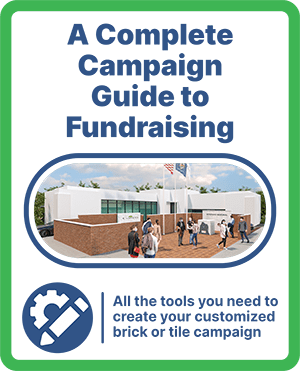
Hidden Costs of Fundraising – What You Need to Know
Raising money takes money.
Upkeep, donor gifts, opportunity costs… With so many surprise obstacles and hidden costs, planning a fundraiser might seem intimidating for small businesses and nonprofits. A little extra knowledge can go a long way to demystifying the process, however. By knowing what to expect and how to plan accordingly, an organization of any size can establish a successful fundraising campaign and tackle any obstacles along the way.
What are the Hidden Costs of Fundraising?
The entire point of fundraising is to make money, which is why many organizations are surprised to find that raising funds itself can be costly. Some of the surprise fundraising costs people encounter when event planning include:
- Advertising costs, such as paid social media campaigns
- Donor gifts
- Employee salaries
- Online platform transaction fees
- Opportunity cost
- Subscription fees for online fundraising platforms
- Upkeep costs for web pages
- Venue rental fees
6 Ways to Save Money While Fundraising
Knowing what hidden costs to expect means knowing where to cut costs whenever possible. Below are some simple ways to cut unnecessary, indirect costs that can increase the effectiveness of all kinds of fundraising activities.
1. Try Different Events
Some money-raising events require more upfront costs than others. If your organization plans these kinds of events regularly, try mixing things up. Not only can it help reduce hidden costs, but it can also reinvigorate your donors.
Fun, low-cost fundraising ideas include:
- Bake sales
- Brick fundraisers
- Car washes
- Potlucks
- Raffle sales
- Silent auctions
2. Get Extra (Free) Help
Lots of people and organizations offer pro bono, or free, nonprofit assistance to small or mid-sized nonprofits. Some of the free resources nonprofits can access include pro bono legal assistance (including help filing for tax breaks), social media management, and event volunteers.
3. Reevaluate Donor Management Systems
Sending periodic reminders about events to recurring donors, or “nudging,” is a common engagement strategy for nonprofits. Nudging typically involves the use of a subscription-based donor management platform to send automated messages to donor lists. Sometimes these platforms help organizations achieve their goals. Other times it might be best to cut this service.
One case study found that while nudges help increase donations, they also increase how many people unsubscribe from mailing lists, which itself is a hidden cost of fundraising efforts. Researchers further realized that not accounting for this hidden cost led to organizations overestimating their engagement strategies’ effectiveness.
These findings mean that it’s important for nonprofits to periodically review their engagement strategies and the platforms they use to engage with donors. If these strategies aren’t helping the organization achieve its goals, it might be time to unsubscribe from these online services and find newer, more cost-effective ways to engage donors.
4. Utilize Volunteer Work
People in the United States are extremely charitable. One 2016 survey from the US Bureau of Labor Statistics reveals that nearly 25% of adults in the country volunteer their time. That means there are millions of people across the nation that may be willing to help you fundraise for your organization—for free.
There are plenty of ways to find volunteers in your area. The most direct way is to request help through your organization’s website and social media pages. Nonprofit organizations can also work with VolunteerMatch to get started on their search for volunteers.
5. Value Your Employees
Volunteer work can save money, but your organization will still likely need at least a few full-time employees to keep everything running. Keeping those employees happy and well-trained is vital to saving your organization money. The reason? Employee turnover is expensive.
Experts estimate that the cost of replacing just a single employee can cost organizations up to two times the cost of said employee’s annual salary. That means an increase in employee turnover can cut into an organization’s bottom line. For a smaller nonprofit, constantly spending money and time hiring and training new employees might ultimately sink the organization.
There are a few key ways to reduce employee turnover, including:
- Being patient and thorough enough in the hiring process to find the right employees
- Taking the time to fully train employees
- Offering competitive wages and benefits
- Communicating with employees frequently to understand their career goals and job satisfaction
Make the Switch to Online Donations
To be clear, you don’t have to abandon in-person fundraising entirely. Not offering people the option to donate online, however, can seriously reduce the amount of money your fundraisers generate. You see, people don’t always need special events to convince them to donate; some people are perfectly willing to make one-time or even recurring donations online.
Having a donation portal on your website is key to enabling online donations. If you use a third-party donation service, expect minor processing fees for both yourself and sometimes online donors. Keep in mind that whenever you accept online donations, information security is your responsibility. That means ensuring your online donation tools are secure, so that scammers cannot access donor information, like credit card numbers.
Final Thoughts
At the end of the day, you want your fundraising events to meet their goals so that your nonprofit organization can function properly. One of the best ways to make fundraisers successful? To account for the hidden costs of fundraising.
If you’re new to fundraising for nonprofits, the entire process might seem overwhelming. We can make the process a little easier. Just go here to download our FREE fundraising packet so we can help you get started on your fundraising journey.




